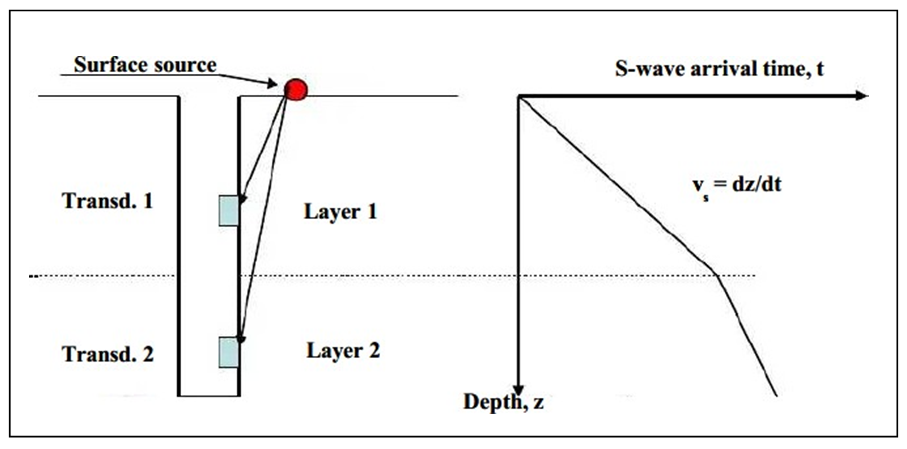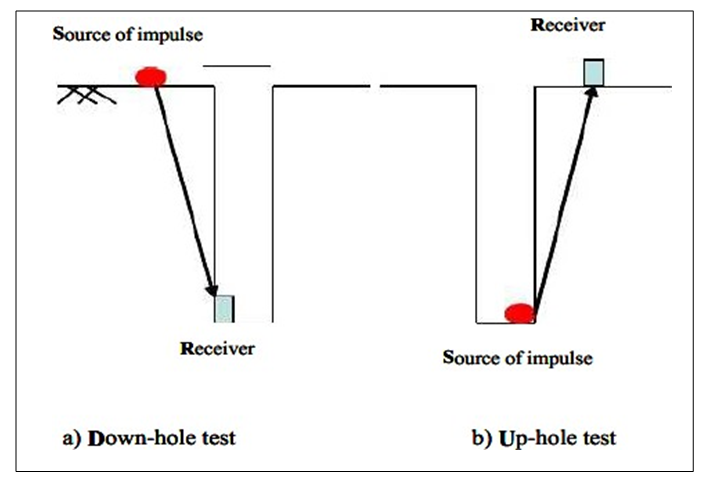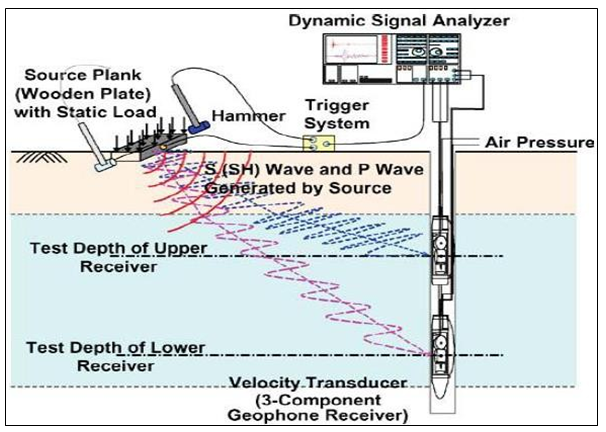
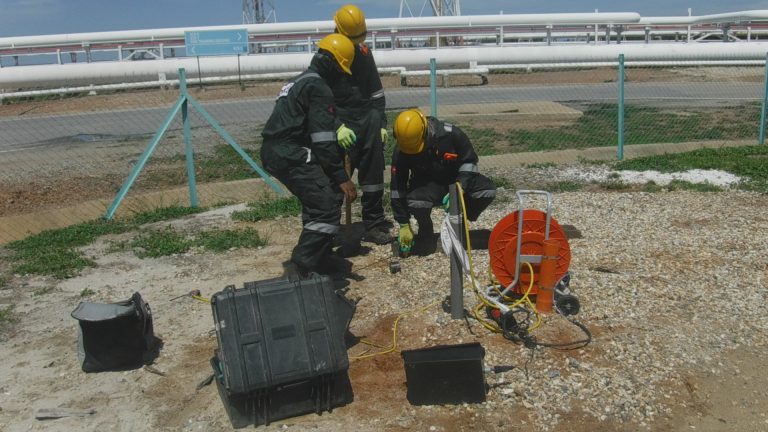
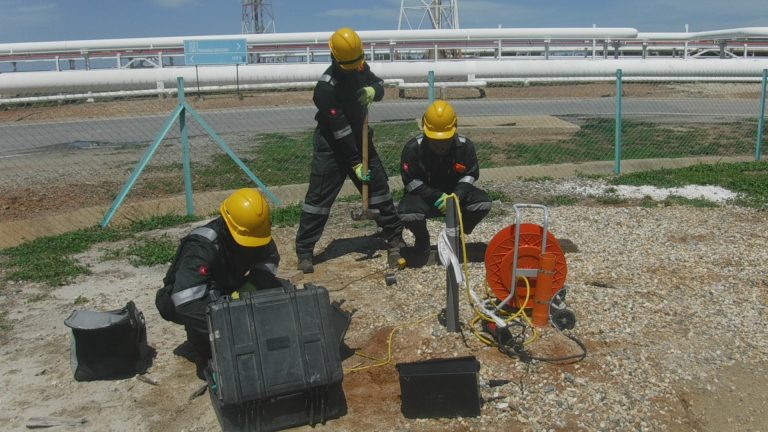
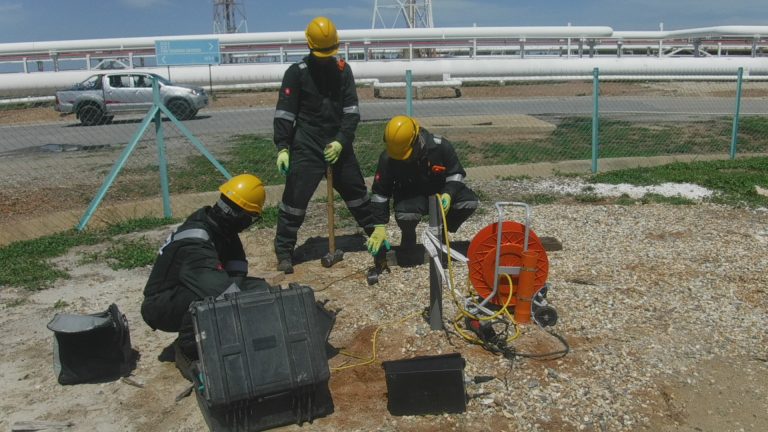
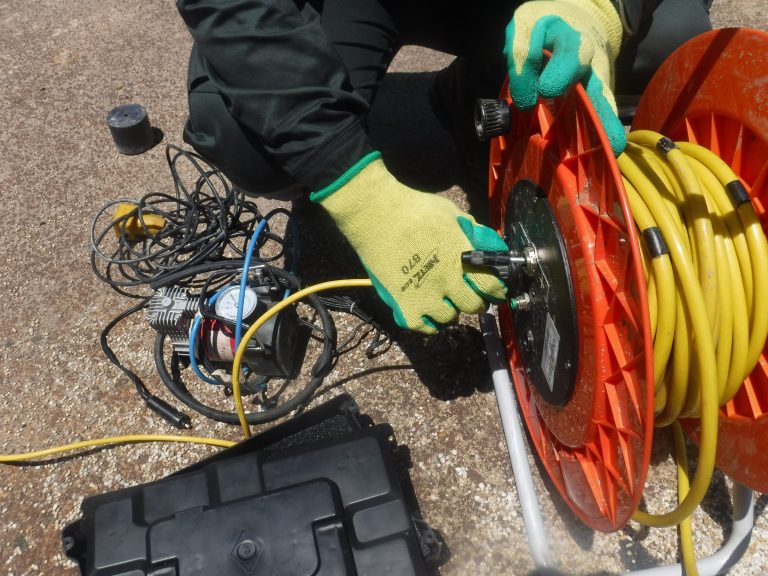
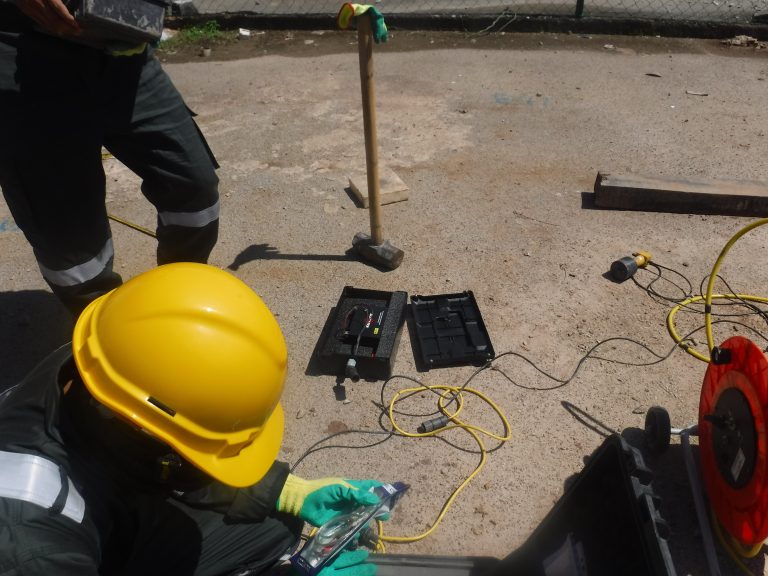
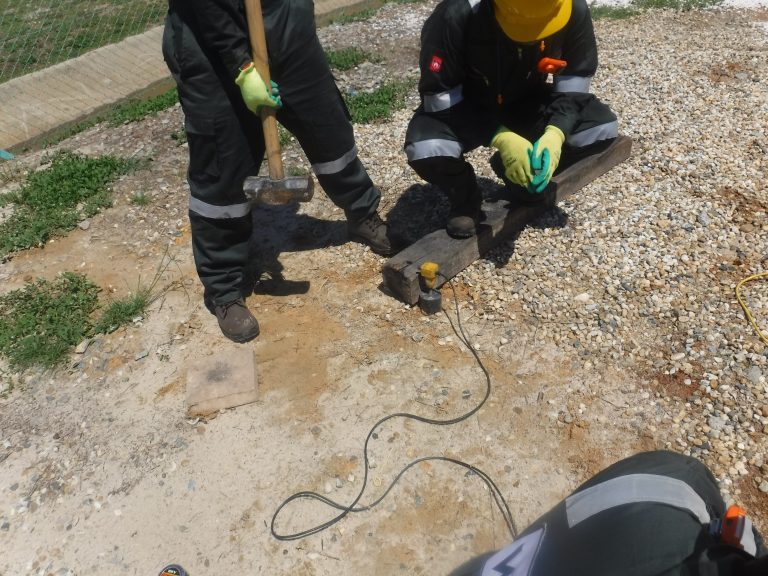
The objective of seismic down-hole/up-hole tests is to measure travel times of compression/pressure waves (P- waves) and shear waves (S-waves) from the energy source to the receivers. These tests can be performed in single borehole. A hole is drilled to the required depth at the testing site and a vibrating source is created to determine shear wave velocity for various soil layers. In this case the waves will be travelling in vertical direction either down or up depending on the location of the source of impulse.
In down-hole test, the generated waves propagate through the soil layers in downward direction. A single wave source is located on the ground surface adjacent to the borehole. Inside the hole, either a string of multiple receivers at known depths is fixed or a single receiver is moved to different depths as the test advances. All receivers are connected to high-speed recording system and the output is measured as a function of time. The system with multiple receivers / transducers is given in Figure 1. The shear wave velocity is obtained from the time verses depth curve which is shown in the same figure.
In up-hole test, a movable energy source is located inside the borehole with a single receiver on the ground surface adjacent to the borehole. A schematic view of such test is given in Figure 2.
The propagating waves travel through the soil layers in the vertical direction in case of the down-hole test. There as the waves travel across the holes means in horizontal direction in cross-hole test.
